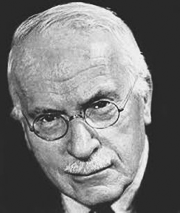Chapter 2Archetypes and Symbols
This chapter provides an overview of Carl Jung's theories of the unconscious, which differed from Freud's theories and which introduce archetypes. Archetypes are innate thought patterns that reside in the unconscious, sharing similarities with instincts and with the proposed power to, under the level of awareness, influence collective behaviour such as trends in the financial markets.
Carl Gustav Jung
The Swiss psychiatrist Carl Gustav Jung (1875–1961) was one of the pioneers of the unconscious and the founding father of analytical psychology (see Figure 2.1). After studying medicine in Basel in 1900, he started work at the renowned Burghölzli Psychiatric Hospital in Zurich. Six years later he contacted Sigmund Freud for the first time, sending him a copy of his book, The Psychology of Dementia Praecox (dementia praecox is known today as schizophrenia). When they met for the first time in Vienna, it was clearly a meeting of minds—they talked for 13 hours—and Freud followed up by sending a collection of his latest essays to the more junior Jung. It was the beginning of a period of close co-operation that lasted until 1913.

Figure 2.1 Carl Gustav Jung
Their relationship was a two-way street, particularly as psychology was still in its infancy. Freud played an important role in forming Jung's views, but he also took cues from his younger colleague. ...
Get The Mystery of Market Movements: An Archetypal Approach to Investment Forecasting and Modelling now with the O’Reilly learning platform.
O’Reilly members experience books, live events, courses curated by job role, and more from O’Reilly and nearly 200 top publishers.

